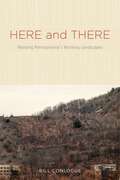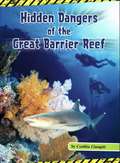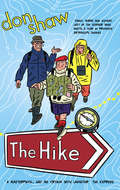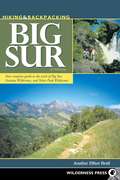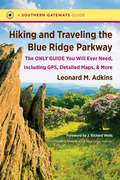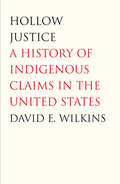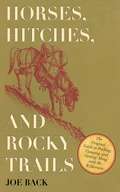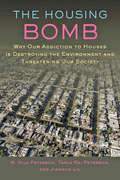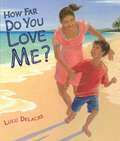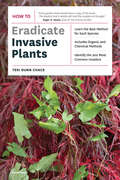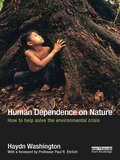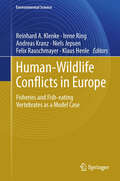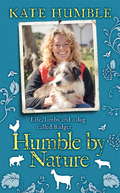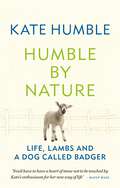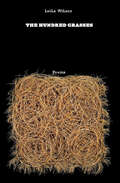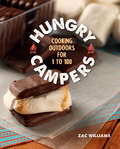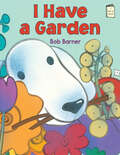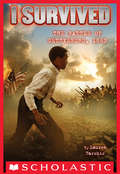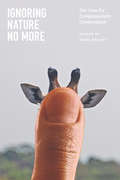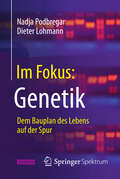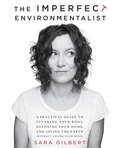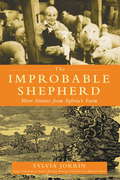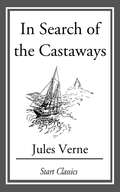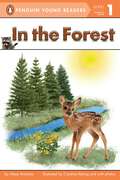- Table View
- List View
Here and There: Reading Pennsylvania's Working Landscapes
by Bill ConlogueThe global economy threatens the uniqueness of places, people, and experiences. In Here and There, Bill Conlogue tests the assumption that literature and local places matter less and less in a world that economists describe as “flat,” politicians believe has “globalized,” and social scientists imagine as a “global village.” Each chapter begins at home, journeys elsewhere, and returns to the author’s native and chosen region, northeastern Pennsylvania. Through the prisms of literature and history, the book explores tensions and conflicts within the region created by national and global demand for its resources: fertile farmland, forest products, anthracite coal, and college-educated young people. Making connections between local and global environmental issues, Here and There uses the Pennsylvania watersheds of urban Lackawanna and rural Lackawaxen to highlight the importance of understanding and protecting the places we call home.
Hidden Dangers of the Great Barrier Reef (Fountas & Pinnell LLI Gold #Level Q)
by Cynthia Clampitt<p>Natural Beauty With a Dangerous Side <p>The Great Barrier Reef in Australia is a wonder of the natural world. Lurking beneath the surface of its waters, however, are some of the most dangerous animals on the planet, armed with poisonous stingers and teeth like harpoons. Before you head off for a trek across the reef or a dive into the surrounding sea, make sure you know something about them. <p>Text Elements: <p> <li>Genre: Nonfiction, Expository <li>Text Structures: Main: Categorical Embedded: Description, Compare/Contrast <li>Text Features: table of contents, headings, photos, captions, sidebars, map, glossary</li> </p>
The Hike
by Don ShawFreddy, Phil and Don are three grumpy old men, travelling at various speeds in the slow lane of retirement, at a loss to understand the mad modern world around them.Their chosen method of escape from all this is a shared weekly hike in the Peak District, come gale, hail, snow or torrential rain. They pass the time bumping into colourful and eccentric locals, but their real passion is bickering among themselves. Not only about the right path to take, but also about where they're all going at the fag end of life. Phil likes to dash up hills trying to beat his personal best, while Freddy plots how to sabotage him - teasing him at leisure and asking deep and difficult questions. Stuck in the middle, Don's only ambition is to stop the squabbling getting out of hand long enough to find a nice pub for lunch.As warm as the wind is cold, as dry as the lashing rain is wet, The Hike is a hilarious tale of bum-warmers, crayfish-fanciers, East German Trabant enthusiasts, bodger philosophers, sticky ginger cake, gorgeous countryside and the subtle art of 'onedownmanship'.
Hiking and Backpacking Big Sur
by Analise Elliot HeidThis is the most detailed guide to hiking and backpacking in Big Sur. Explore the endless hiking and backpacking possibilities in 75 trips (plus numerous side trips) on the rugged coastline and isolated backcountry trails of Big Sur, Ventana Wilderness, and Silver Peak Wilderness. Stretching 90 miles from Carmel to San Simeon, Big Sur consists of coastal cliffs, jagged rocky promontories, ancient redwood forests, and lush riparian woodlands. This invaluable resource gives the latest information on the trails, roads, camps, and beaches in Big Sur, plus all of the area's state parks and wilderness areas.
Hiking and Traveling the Blue Ridge Parkway
by Leonard M. Adkins J. Richard WellsThis comprehensive guidebook provides a detailed description of every official trail along the Blue Ridge Parkway. But that's just the beginning: veteran hiker Leonard M. Adkins includes information on every trail that touches the Parkway, including the Appalachian Trail, the Mountains-to-Sea Trail, and other public pathways on national park, state park, national forest, municipal, and private lands. You'll find GPS coordinates for official Parkway trailheads, along with fifty maps and many photographs of what you'll see along the way. Adkins notes each trail's length, difficulty, points of interest, handicap accessibility, and natural features. Far more than a guide to the trails, this book also tells you what to expect at overlooks, as well as where to dine, sleep, and find a restroom, and suggests worthwhile side trips. Elevation change charts for bicyclists, minimum tunnel heights for RVs, camping recommendations, roadside bloom calendars, sightseeing information for nearby towns, and other advice make this the perfect companion for your next Parkway adventure.
Hollow Justice
by David E. WilkinsThis book, the first of its kind, comprehensively explores Native American claims against the United States government over the past two centuries. Despite the federal government’s multiple attempts to redress indigenous claims, a close examination reveals that even when compensatory programs were instituted, Native peoples never attained a genuine sense of justice. David E. Wilkins addresses the important question of what one nation owes another when the balance of rights, resources, and responsibilities have been negotiated through treaties. How does the United States assure that guarantees made to tribal nations, whether through a century old treaty or a modern day compact, remain viable and lasting?
Horses, Hitches, and Rocky Trails
by Joe BackHorses, Hitches, and Rocky Trails is the most complete presentation available of the method of packing for the wilderness. The full treatment is amplified by the brilliant drawings by Joe Back, a most-able artist, as well as a man who knows what he is talking about from personal experience. Black includes step-by-step instructions on not only how to prepare for heading out into the wilderness, but also how to cope with the elements. Some of the lessons taught in this book include:Packing horsesEquipmentBalancing the loadMaking campGetting along in the wildernessFinal tiesAnd many more!Horses, Hitches, and Rocky Trails is for both the amateur just learning how to prepare for the wilderness and the professional packer looking for some new tips. With wonderful illustrations, Joe Back makes it easy to be prepared and safe on your travels. So whether this is your first time out or you're a seasoned veteran, make sure that Horses, Hitches, and Rocky Trails is included with the rest of your packed equipment.
The Housing Bomb: Why Our Addiction to Houses Is Destroying the Environment and Threatening Our Society
by M. Nils Peterson Tarla Peterson Jianguo LiuHow our thirst for more and larger houses is undermining society and what we can do about it.Have we built our way to ruin? Is your desire for that beach house or cabin in the woods part of the environmental crisis? Do you really need a bigger home? Why don’t multiple generations still live under one roof? In The Housing Bomb, leading environmental researchers M. Nils Peterson, Tarla Rai Peterson, and Jianguo Liu sound the alarm, explaining how and why our growing addiction to houses has taken the humble American dream and twisted it into an environmental and societal nightmare. Without realizing how much a contemporary home already contributes to environmental destruction, most of us want bigger and bigger houses and dream of the day when we own not just one dwelling but at least the two our neighbor does. We push our children to "get out on their own" long before they need to, creating a second household where previously one existed. We pave and build, demolishing habitat needed by threatened and endangered species, adding to the mounting burden of global climate change, and sucking away resources much better applied to pressing societal needs. "Reduce, reuse, recycle" is seldom evoked in the housing world, where economists predict financial disasters when "new housing starts" decline and the idea of renovating inner city residences is regarded as merely a good cause. Presenting irrefutable evidence, this book cries out for America and the world to intervene by making simple changes in our household energy and water usage and by supporting municipal, state, national, and international policies to counter this devastation and overuse of resources. It offers a way out of the mess we are creating and envisions a future where we all live comfortable, nondestructive lives. The "housing bomb" is ticking, and our choice is clear—change our approach or feel the blast.
How Far Do You Love Me?
by Lulu Delacre<p>Based on a bedtime game author/illustrator Lulu Delacre played with her young daughters, How Far Do You Love Me? is an “I love you” book with a twist. <p>With every expression of love, readers visit one of thirteen different locations around the world, each a beautifully illustrated scene of adults and children in a place of natural beauty. <p>Guided Reading: K; Lexile: AD650L; Interest Level: Grades PreK - 3; Reading Level: Grades 2 - 3; Themes: Colors, Nature/Science, Multi-ethnic interest, Environment/Nature, Cultural Diversity, Childhood Experiences and Memories, Empathy/Compassion, Gratitude, Optimism/Enthusiasm, Realistic Fiction, Water</p>
How to Eradicate Invasive Plants
by Teri Dunn Chace“Every garden shed should have a copy of this book. The wisdom that it wields will hold the invaders at the gate.” —Roger B. Swain, The Victory GardenHow to Eradicate Invasive Plants offers a clear, practical solution to the increasingly common problem of invasive plants. Clearly written and easy-to-use, Teri Dunn Chance shows you how to recognize more than 200 common invasive plants and offers organic and responsible chemical eradication options for each species. With this reference on their shelves, gardeners, landscapers, and managers of public and private land across the country can confidently tackle the invasive plants to make room for a sustainable plant community!
Human Dependence on Nature: How to Help Solve the Environmental Crisis
by Haydn WashingtonHumanity is dependent on Nature to survive, yet our society largely acts as if this is not the case. The energy that powers our very cells, the nutrients that make up our bodies, the ecosystem services that clean our water and air; these are all provided by the Nature from which we have evolved and of which we are a part. This book examines why we deny or ignore this dependence and what we can do differently to help solve the environmental crisis. Written in an accessible and engaging style, Haydn Washington provides an excellent overview of humanity’s relationship with Nature. The book looks at energy flow, nutrient cycling, ecosystem services, ecosystem collapse as well as exploring our psychological and spiritual dependency on nature. It also examines anthropocentrism and denial as causes of our unwillingness to respect our inherent dependence on the natural environment. The book concludes by bringing these issues together and providing a framework for solutions to the environmental crisis.
Human - Wildlife Conflicts in Europe
by Felix Rauschmayer Niels Jepsen Klaus Henle Reinhard A. Klenke Irene Ring Andreas KranzThis book is about conflicts between different stakeholder groups triggered by protected species that compete with humans for natural resources. It presents key ecological features of typical conflict species and mitigation strategies including technical mitigation and the design of participatory decision strategies involving relevant stakeholders. The book provides a European perspective, but also develops a global framework for the development of action plans.
Humble by Nature
by Kate HumbleIn 2007, after twenty years of living in London, Kate Humble and her husband Ludo decided it was time to leave city life behind them. Three years later, now the owner of a Welsh smallholding, Kate hears that a nearby farm is to be broken up and sold off. Another farm lost; another opportunity for a young farmless farmer gone. Desperate to stop the sale, Kate contacts the council with an alternative plan - to keep the farm working and to run a rural skills and animal husbandry school alongside it. Against all odds, she succeeds.Here, in Humble By Nature, Kate shares with us a highly personal account of her journey from London town house to Welsh farm. Along the way we meet Bertie and Lawrence the donkeys, Myfanwy and Blackberry the pigs and goats Biscuit and Honey, not forgetting a dog called Badger and his unladylike sidekick Bella. And we are introduced to the tenant farmers Tim and Sarah, the locals who helped and some who didn't, and a whole host of newborn lambs. Full of the warmth and passion for the natural world that makes Kate such a sought after presenter, Humble By Nature is the story of two people prepared to follow their hearts and save a small part of Britain's farming heritage, whatever the consequences.
Humble by Nature: Life, lambs and a dog called Badger (Kate Humble)
by Kate Humble'You'd have to have a heart of stone not to be touched by Kate's enthusiasm for her new way of life' - Daily MailIn 2007, after 20 years of living in London, Kate Humble and her husband Ludo decided it was time to leave city life behind them. Three years later, now the owner of a Welsh smallholding, Kate hears that a nearby farm is to be broken up and sold off. Another farm lost; another opportunity for a young farmless farmer gone. Desperate to stop the sale, Kate contacts the council with an alternative plan - to keep the farm working and to run a rural skills and animal husbandry school alongside it. Against all odds, she succeeds.Here, in Humble by Nature, Kate shares with us a highly personal account of her journey from London town house to Welsh farm. Along the way we meet Bertie and Lawrence the donkeys, Myfanwy and Blackberry the pigs and goats Biscuit and Honey, not forgetting a dog called Badger and his unladylike sidekick Bella. And we are introduced to the tenant farmers Tim and Sarah, the locals who helped and some who didn't, and a whole host of newborn lambs.Full of the warmth and passion for the natural world that makes Kate such a sought after presenter, Humble By Nature is the story of two people prepared to follow their hearts and save a small part of Britain's farming heritage, whatever the consequences.
Humble by Nature: Life, lambs and a dog called Badger (Kate Humble)
by Kate Humble'You'd have to have a heart of stone not to be touched by Kate's enthusiasm for her new way of life' - Daily MailIn 2007, after 20 years of living in London, Kate Humble and her husband Ludo decided it was time to leave city life behind them. Three years later, now the owner of a Welsh smallholding, Kate hears that a nearby farm is to be broken up and sold off. Another farm lost; another opportunity for a young farmless farmer gone. Desperate to stop the sale, Kate contacts the council with an alternative plan - to keep the farm working and to run a rural skills and animal husbandry school alongside it. Against all odds, she succeeds.Here, in Humble by Nature, Kate shares with us a highly personal account of her journey from London town house to Welsh farm. Along the way we meet Bertie and Lawrence the donkeys, Myfanwy and Blackberry the pigs and goats Biscuit and Honey, not forgetting a dog called Badger and his unladylike sidekick Bella. And we are introduced to the tenant farmers Tim and Sarah, the locals who helped and some who didn't, and a whole host of newborn lambs.Full of the warmth and passion for the natural world that makes Kate such a sought after presenter, Humble By Nature is the story of two people prepared to follow their hearts and save a small part of Britain's farming heritage, whatever the consequences.
The Hundred Grasses: Poems
by Leila Wilson&“Beautiful and necessary.&” —DAN BEACHY-QUICKShimmering and formally precise, the poems of this debut collection &“fuse absence and presence in lines full of a feeling that has no opposite&” (Brian Teare).These are poems written from the periphery of an open field, poems rooted in the flatlands and lowlands: the Midwestern lawns, lakes, and creeks of Leila Wilson&’s childhood, and the farms, canals, and seascapes near her family home&’s in Holland. &“We wonder / what we&’re not / in the field,&” writes Wilson—and reading The Hundred Grasses, we too are made to wonder about both what is lacking and what fills the void. In these poems, the act of looking animates what is seemingly static. Stillness becomes not absence but fullness. Sounds are culled from empty spaces, giving shape to life&’s silences. In the process of this hollowing out and filling up, The Hundred Grasses morphs into an extended and unforgettable investigation of longing and loss, love and doubt.
Hungry Campers: Cooking Outdoors for 1 to 100
by Zac WilliamsMouthwatering recipes for campfire cooking—perfect for scout groups, youth groups, families, and friends—by the author of Little Cowpokes Cookbook.Hungry Campers offers a handy selection of simple and easy to-make recipes that can be used by individuals and groups to prepare meals for all types of outdoor adventures. Simple recipes for breakfasts, lunches, dinners and desserts are complemented by menu plans for weeklong camps, multi-day backpacking trips and even overnighters, making it easy to get outdoors.Each chapter focuses on a specific type of camp cooking, including campfire cooking basics, large groups, Dutch oven, backpacking and recipes for aspiring wilderness gourmets. Helpful tips provide outdoor cooking wisdom for those just getting started as well as new ideas for experienced campers.Recipes for roughing it include: Stadium Brats, Sunnyside Sandwiches, Irish Breakfast, Stovetop Soda Bread, Peanut Butter Sandwich Bar, Beef Goulash, Cheese &‘n&’ Mac, Chicken and Dumplings, Firemen Enchiladas, Pioneer Pizza, Pumpkin Cobbler, Trout Florentine, Hiker&’s Cereal, Icebox Ice Cream, and more.
I Have a Garden (I Like to Read)
by Bob Barner"I have a garden," a frisky dog announces. In simple sentences, the dog guides new readers through a bright and lush garden, which is home to a chipmunk, a bird, a bug, and all sorts of other creatures. "This garden is for me," the dog continues. "No. This garden is for all of us. We have a garden," answer his animal neighbors. Illustrated in vibrant collage, this deceptively simple I like to Read® book is a celebration of nature and community, plus readers can play spot the dog on nearly every spread. Guided Reading Level B.
I Survived the Battle of Gettysburg, 1863 (I Survived #7)
by Lauren Tarshis<p>Does Henry have what it takes to survive the bloodiest battle ever fought on American soil? The Civil War comes to life for I SURVIVED readers! <p>The bloodiest battle in American history is about to begin. . . <p>It's 1863, and Thomas and his father are slaves in South Carolina. But in the chaos of the Civil War, they manage to break free and head north. <p>Through the Underground Railroad they make their way to Pennsylvania. But they can't escape the war -- and soon Thomas finds himself in the middle of a harrowing battle. <p>He's come so far . . . but does he have what it takes to survive Gettysburg? <p>Does he have what it takes to survive the Battle of Gettysburg?</p> <P><P><i>Advisory: Bookshare has learned that this book offers only partial accessibility. We have kept it in the collection because it is useful for some of our members. Benetech is actively working on projects to improve accessibility issues such as these.</i>
Ignoring Nature No More: The Case for Compassionate Conservation
by Marc BekoffFor far too long humans have been ignoring nature. As the most dominant, overproducing, overconsuming, big-brained, big-footed, arrogant, and invasive species ever known, we are wrecking the planet at an unprecedented rate. And while science is important to our understanding of the impact we have on our environment, it alone does not hold the answers to the current crisis, nor does it get people to act. In Ignoring Nature No More, Marc Bekoff and a host of renowned contributors argue that we need a new mind-set about nature, one that centers on empathy, compassion, and being proactive. This collection of diverse essays is the first book devoted to compassionate conservation, a growing global movement that translates discussions and concerns about the well-being of individuals, species, populations, and ecosystems into action. Written by leading scholars in a host of disciplines, including biology, psychology, sociology, social work, economics, political science, and philosophy, as well as by locals doing fieldwork in their own countries, the essays combine the most creative aspects of the current science of animal conservation with analyses of important psychological and sociocultural issues that encourage or vex stewardship. The contributors tackle topics including the costs and benefits of conservation, behavioral biology, media coverage of animal welfare, conservation psychology, and scales of conservation from the local to the global. Taken together, the essays make a strong case for why we must replace our habits of domination and exploitation with compassionate conservation if we are to make the world a better place for nonhuman and human animals alike.
Im Fokus: Dem Bauplan des Lebens auf der Spur
by Dieter Lohmann Nadja PodbregarWelche Macht haben unsere Gene? Sind sie die schicksalhafte Blaupause, die bestimmt, wie intelligent, wie alt oder wie schön wir sind? Lange Zeit war dies die gängige Lehrmeinung. Doch das Dogma ihrer monolithischen Allmacht ist heute längst gefallen. Immer häufiger stoßen Forscher auf Hinweise, wie unser Leben den Genen "ins Handwerk" pfuscht und wie eng die Wechselwirkungen zwischen Erbgut, Stoffwechsel und Umwelt manchmal sind. Die moderne Biotechnologie eröffnet neue Wege der Forschung, wirft aber auch ethische und gesellschaftliche Fragen auf. Dieses Buch erklärt unter anderem, warum bei den Genen die Verpackung manchmal wichtiger ist als der Inhalt, was Viren in unserem Erbgut verloren haben und weshalb es "das Methusalem-Gen" nicht gibt.
The Imperfect Environmentalist
by Sara GilbertActress, producer, mother, and imperfect environmentalist, Sara Gilbert understands how helping the environment can seem overwhelming. Between keeping up with work, friends, and kids, who has the time or money to maintain a compost pile, become an activist, or knit a sweater out of recycled grocery bags? Fortunately, we now know that small changes here and there in our everyday lives can make a big impact on the environment. We just need to know where to begin. That's where Gilbert comes in, with this tongue-in-cheek reference guide packed full of helpful information, available at your fingertips. Read it cover to cover or just open it up to a random page; you can take what you want from it when you want. Whether you've got money to burn or have to crash on a friend's couch, here are all of the eco-essentials to get the planet back on track, and you won't have to hug a single tree--unless tree-hugging is your thing. Sharing the basics on health and beauty, work and money, home and gardening, family and fitness, and more, The Imperfect Environmentalist cuts through the clutter--both in our homes and in our heads--and offers simple approaches to help us clear out the pollutants, put down the poisons, and begin to breathe easy again--one 100% recycled page at a time.Advance praise for The Imperfect Environmentalist "This book really opened my eyes. Then my eyes started stinging and tearing from all the toxins in the environment I'm now aware of. Thanks, Sara, I have a lot to do now."--Lisa Kudrow "Sara's passion and commitment to the environment have given me an awareness that I never had before about our planet. I learn from Sara every day and she makes me want to be a better person. See, you can teach an old dog new tricks."--Sharon OsbourneFrom the Trade Paperback edition.
The Improbable Shepherd
by Sylvia Jorrin Joshua Kilmer-Purcell"The lessons of Sylvia's farm are not just applicable for those who dream of living the rural life. They're universally instructive, and joyfully addictive." --Joshua Kilmer-Purcell, The Fabulous Beekman BoysIn this sequel to her popular first collection, Sylvia Jorrín returns with more vignettes -- along with personal photos, artwork, and recipes--from her life on thefarm to again inspire readers old and new. The Improbable Shepherd is a continuation of Sylvia's Farm, covering the past five years of her experiences on a rural sheep farm. This book brings readers closer to the world around them, and to recognize the simple, often hidden beauties it holds. Told in short vignettes and anecdotes, it is a journal of the continuing growth, persistence, and hope that each new day can bring.Nearly a decade after the publication of her first book, life on Sylvia Jorrin's farm continues to present our improbable shepherdess with new opportunities to appreciate the peace and unexpected joys that farm life brings despite too many tasks and too little time.The Improbable Shepherd immerses the reader fully in Sylvia's farm, echoing her own experiences living with the land and includes photos, and illustrations and Sylvia's personal recipes. Appealing to those who loved Sylvia's first book and want to return, as well as for all the newcomers who have yet to discover Sylvia's powerful prose and earnest message, The Improbable Shepherd will inspire you to follow your dreams, whatever they may be.
In Search of the Castaways
by Jules Verne"In Search of the Castaways" is a novel by the French writer Jules Verne, published in 1867-1868. In 1876 it was republished by George Routledge & Sons as a three volume set titled "A Voyage Round The World". The three volumes were subtitled "South America", "Australia", and "New Zealand", which are all included in this publication.
In the Forest (Penguin Young Readers, Level 1)
by Alexa AndrewsLearn all about what lives and grows in the forest in the three stories of this Level 1 nonfiction reader. Deer and other wildlife, trees and other plant life, and much more are found In the Forest!
